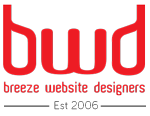BWD Marketing Podcast – Alexia Cost
[embed]https://youtu.be/j-6d2oy0scU[/embed] Overall Look & Feel: We decided to revise our BWD Marketing Podcast’s look & feel with a fresh modern design. We chose to keep it out of the box with our stunning 3D intro and then keeping it clean with our choice of minimalist lower...










